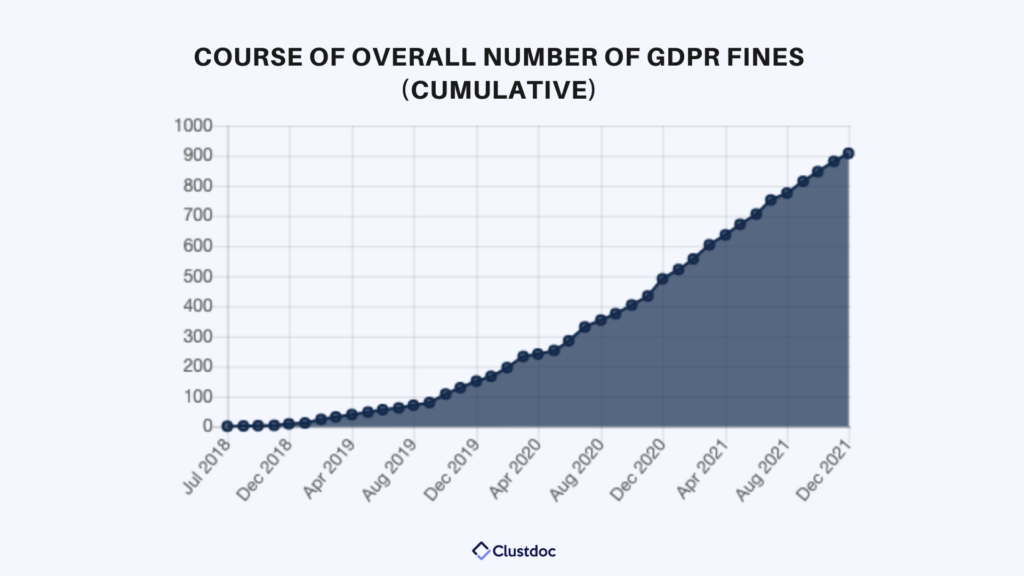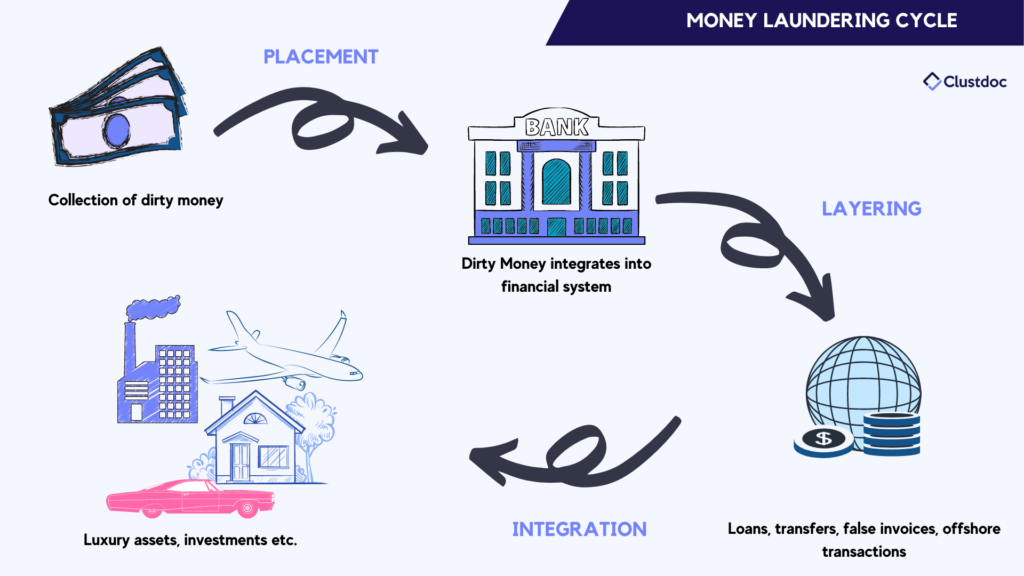
How to request and verify KYC documents (the quick, easy, & compliant way)
Summary
Requesting and verifying KYC documents is becoming standard practice in many industries. Previously limited to banks and financial institutions, it now applies to real estate, the loan industry, and online gambling and gaming.
This is not surprising as KYC is the backbone of the worldwide legislative effort for person verification to prevent money laundering and funding terrorist activities.
Whatever industry you’re in, one thing is certain — the more flaming hoops your customer has to jump through to get access to your service, the more likely they are to give up.
That’s the reason why companies do their best to eliminate hurdles and friction with a smooth client onboarding process.
But what happens when those hurdles are government-mandated and heavily sanctioned?
Well, then your goal needs to be to make sure you thoroughly collect all KYC documents from your clients on top of providing a straightforward onboarding experience.
In this post, we’ll show you how to request and verify KYC documents in a quick, easy, and compliant way to protect your business from criminal activity or even avoid hefty regulatory fines and penalties.

There are a few definitions and concepts to know about the whole world of KYC and Compliance. So let’s start from the beginning.
Content
What is KYC?
Before we dive into KYC processes and KYC documents, it’s important to understand why (and how) those came about.
Know Your Customer (KYC) is a set of practices, laws, and regulations adopted all over the world for customer identification to fight money laundering and fraudulent activities in business.
What is Digital KYC or eKYC?
Digital KYC (also known as eKYC) is the process of collecting KYC documents and personal, financial, or historical data to verify digital identity via an online platform or software. As more and more industries fall under KYC rules (KYC for online gaming is just around the corner), eKYC becomes important because of its speed, its simplicity, and the increasing number of business transactions completed online.
KYC helps businesses comply with AML and CFT laws.
What is Anti-Money Laundering (AML)?
Anti-Money Laundering (AML) rules are a set of laws and regulations that were designed to prevent money-laundering activities.
In France, for example, the AMF is the public authority in charge of preventing money laundering and terrorist financing activities.

What is Countering Financing of Terrorism (CFT)?
Countering Financing of Terrorism (CFT) rules are a subset of the AML rules. They aim to give financial institutions and other businesses the means to address suspicious activities that relate to terrorism funding.
During the Know Your Customer (KYC) process, you verify that the customer is who they say they are, not only to protect your business but also to comply with regulations.

In addition to abiding by the AML and CFT rules, the goal of the KYC process is to establish what the client’s needs are. That way, you can serve them while minimizing risk for everyone involved.
KYC helps businesses prevent money laundering.
The stages of money laundering
According to the UN Office of Drugs and Crime, a typical money laundering scenario involves 3 main steps:

Step 1. Placement
At this stage, the launderer’s goal is to move illegal cash away from its initial source.
They would deposit the funds in the legal financial system after breaking them into smaller amounts or by placing the money in safer financial instruments.
Step 2. Layering
Then, the layering process starts. Methods of layering can be fairly complex since criminals want to make the money as hard to detect as possible. No matter the method used, the goal of layering is to disguise the money as regular payments and legitimize it as soon as possible.
This step usually involves Casino, Cash businesses, foreign investments and more.
Step 3. Integration
Then, the launderer redirects the money back into the legal economy and invests large amounts in property, cars, and luxury items, for example.
To prevent your business from being used as a way to launder money without you even knowing, it is essential to ensure strict compliance with AML regulations and therefore put in place KYC processes.
Find below an interesting video on how Money laundering works, based on the real-life example of Al Capone, aka the type of client you don’t want in your business. Ever.
Why are KYC documents essential to your business?
The KYC process requires you to do 3 things to protect your activity:
- verify individuals applying for financial, banking, or property management services;
- monitor accounts and activities, perform risk assessment, and report suspicious transactions and deals;
- figure out the best services you can offer to every individual client.
Broadly speaking, the KYC process is designed to meet two international regulations against financial crimes: Anti-Money Laundering (AML) and Countering Financing of Terrorism (CFT).
The steps to effective KYC compliance in your business
Use a KYC onboarding software
Using the right technology is an essential component of your strategy. In case of an audit, investigators would like to understand in detail how you collect, store and retrieve data and KYC documents.
If you’re still relying on spreadsheets and emails, it’s going to be hard to demonstrate compliance or even find specific entries.
That’s why you need a client onboarding software to complete your KYC onboarding.
It allows you to establish a company-wide system for onboarding new clients and also serves as a centralized repository for all KYC documents, forms, and client records.
Organize supporting KYC documents/materials
Before you start designing your workflow, gather your team and audit all resources involved in managing KYC. The list below is not exhaustive, you can check out our article on KYC documents to learn more.
Standard KYC information
Basic KYC information includes personal details about your client:
- First Name/ Last Name
- Date of birth
- Contact address/ proof of address
- Contact details (email address/ mobile number)
- Tax/personal identification number
- Employment status
- Annual income
- Net worth/ details of private entities (accounts/property owned)
But that’s just the tip of the iceberg.
If you’re in financial services or real estate, you’ll also need to have:
- Liquidity data
- Tax status
- Risk tolerance
- Liabilities
- Dependents
- Investment experience & timeline
And, if you’re working with business entities, you’ll also need to add to that initial step a complete KYB process:
- Trading name
- Address
- Company identification number
- VAT/GST number (if applicable)
- Status (active or something else)
- Personal details of key stakeholders (VPs, Directors)
- Personal details of key stakeholders (VPs, Directors)
Standard KYC documents
The list of required KYC documents depends on the type of client you deal with (whether you work with individuals or businesses) and the country you’re in. You’ll find below a standard list of KYC documents:
- Passport
- National ID Card
- Driver’s license
- Residence permit
- Bank statement
- Certificate of incorporation
- IBAN
Any document that needs to be signed
If you have any PDF forms, also make sure you organize them in a folder and get them ready for signature during the KYC process.
Map out your KYC workflow
KYC workflows can easily involve several stakeholders. In order to get off on the right foot with your KYC process, use a workflow builder to capture all steps involved.
Whimsical is a user-friendly tool that we use ourselves to design KYC workflows on behalf of Enterprise clients at Clustdoc.
It allows you to organize your thoughts and make sure you define a complete experience before actually building it in your client onboarding software.

How to build a KYC checklist
Create a digital list of KYC documents
Considering the purpose of the KYC process, it’s no wonder that it results in a lot of work (and paperwork) for your clients as seen previously.
Unfortunately, there’s no way around it.
So what happens when a new client inquires about your services, and you send them a mile-long email that signals hours spent on document-hunting, scanning, and emailing?
Usually, they reconsider, right?
Maybe they don’t need your particular service? Maybe they can find someone who will make the KYC onboarding process faster and easier for them? And they find that someone.
Well… what if we told you that someone could be you?
You could make your KYC process faster and easier. You could reduce new client churn (drastically) by speeding things up and making them frictionless. And you could be that business people turn to when they’re frustrated and annoyed with how long it takes your competition to get the ball rolling.
All you need is KYC onboarding software.
Create a Seamless KYC Onboarding Experience with Clustdoc
When it comes to KYC documents and forms, the three most important things for you as the service provider are:
- your clients don’t churn because you’re giving them a week’s worth of work;
- you can repeat the process with five, ten, or 1,000 clients;
- you’re doing what the law requires of you (faster, cheaper, and more accurate).
You’ll get all that once you transition your eKYC to Clustdoc.
And here’s how:

Create your KYC documents request
Use Clustdoc’s KYC onboarding templates or build your custom workflow. Your workflow can include custom KYC forms, KYC documents, and contracts.
You can easily tailor form fields (depending on which data you’re collecting), and add file quests to your workflow to collect supporting documents.
Any PDF form that must be signed can be completed using our e-signature functionality).

Invite clients to start the flow or embed a KYC Onboarding portal to your website
Ready to launch your workflow, you can do this with a few clicks.
You can send an invite via email, or embed a KYC onboarding portal in your website.
Clients will be redirected to a secure interface where they can securely complete their KYC onboarding.

- Track the KYC onboarding process — you can check on the status of every opened KYC onboarding request. And you can schedule regular reminders that Clustdoc will send out as the due date for submission draws near.

- Store data in a secure, GDPR-compliant client portal — every piece of document you collect is handled by a secure & customizable client portal with the highest level of encryption (in line with EU’s customer data protection policies).

- Manage all documents in one place & on-the-go — you don’t have to be in front of your computer to request changes, accept submitted documentation, or request changes. Clustdoc’s app lets you handle all this from your phone so that you can quickly respond and provide a seamless KYC onboarding experience.

- Easily & safely connect with other tools — our integrations allow you to connect your custom client portal with other tools that you’re using. Share KYC supporting documents and KYC forms with your colleagues, send them to your CRM, or share them with your data verification provider without wasting precious time.
Take Your KYC Onboarding to the Next Level with Clustdoc
Getting your customer due diligence on point is important.
But…
What’s more important is doing it quickly and staying compliant.
Your customers have choices. If you take too long to process their requests — or if you make KYC onboarding complicated — they just might check out your competition.
Start using Clustdoc to prevent that from happening.
Get to know Clustdoc
Clustdoc is a professional Client Onboarding and Verification Software.
Many teams use Clustdoc to orchestrate, run and manage repeated industry-specific onboarding workflows with clients or stakeholders:
– Automate routine workflows – no more paper documents
– Get rid of manual tasks and decrease approval lag time
– Stop chasing data and files across multiple tools
– Improve customer engagement and satisfaction

Marie
Marie is the voice of the customer at Clustdoc, she loves guiding businesses toward clarity in their processes and client interactions for better performance and peace of mind.


